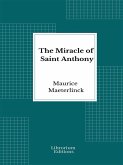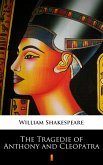The Temptation of Saint Anthony by Gustave Flaubert is a dramatic poem in prose (often referred as a novel) by the French author Gustave Flaubert published in 1874. Flaubert spent his whole adult life working fitfully on the book.
In 1845, at age 24, Flaubert visited the Balbi Palace in Genoa, and was inspired by a painting of the same title, then attributed to Bruegel the Elder (now thought to be by one of his followers). Flaubert worked at the subject in three versions, completed in 1849, 1856 (with extracts published at that time) and 1872, before publishing the final version in 1874.
It takes as its subject the famous temptation faced by Saint Anthony the Great, in the Egyptian desert, a theme often repeated in medieval and modern art. It is written in the form of a play script, detailing one night in the life of Anthony the Great, during which he is faced with great temptations.
In 1845, at age 24, Flaubert visited the Balbi Palace in Genoa, and was inspired by a painting of the same title, then attributed to Bruegel the Elder (now thought to be by one of his followers). Flaubert worked at the subject in three versions, completed in 1849, 1856 (with extracts published at that time) and 1872, before publishing the final version in 1874.
It takes as its subject the famous temptation faced by Saint Anthony the Great, in the Egyptian desert, a theme often repeated in medieval and modern art. It is written in the form of a play script, detailing one night in the life of Anthony the Great, during which he is faced with great temptations.
- Saint Anthony: The protagonist. He is tempted by many characters and objects to stray from his belief that isolation is the truest form of worship.
- Ammonaria: One of his sister's friends, Anthony is drawn into a battle between his desire for her and his desire to remain holy before God in his isolation. He is distraught that he cannot control his body.









